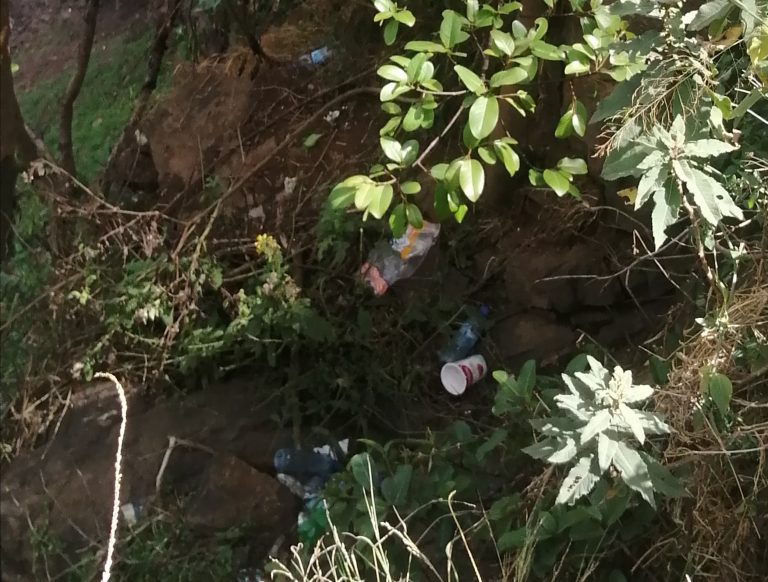By Dr. Richard Munang
Methane contributes up to 45% of the warming experienced in the globe today. It has a 100-year global warming potential that is 28-34 times that of Carbon Dioxide (CO2) and 84-86 times stronger over a 20-year period.
In the Global South, (the Global North implies the developed economies, the Global South implies the underdeveloped economies), methane emissions are projected to double by 2050, making it the global south’s climate challenge. Specifically, with increased growth, so is the increase in the demand for food and consumer goods in the global south, as well as the waste they generate. To keep the 1.5°C warming limit alive, methane emissions need to be reduced by 50% by 2050 without impeding quality of life developments in the global south. Focusing on CO2 alone means at best, achieving half the temperature reduction in two decades. Because it is short-lived and most potent in the short term, mitigating methane stands out as the fastest, most efficient way to reduce temperature in our lifetime.

Organic waste in landfills decomposes to form methane, which is not only a highly potent greenhouse gas but also highly flammable. The implication is a heightened risk of landfill fires, especially during hot weather, which further releases harmful particulate matter from the burning waste. So, as heatwaves continue to increase, so will the risk of landfill fires.
While up to 40% of methane emissions are from fossil fuel extraction, a staggering 60% are food systems emissions – i.e., food production and food waste.
The organic waste in landfills is one of the most significant sources of methane, and food loss and waste are core drivers. An estimated 50% of all food systems emissions emanate from food that is never consumed – i.e., food loss as postharvest losses, e.g., in Africa where 30 – 50% of food is lost as PHLs and food waste. When this organic waste ends up in the trash and later concentrated in landfills, the methane emitted from this waste can be visible from space.
Beyond food waste, there is also the rearing of livestock for dairy and meat, which is recorded as the single largest anthropogenic source of methane – primarily through enteric fermentation. Low-quality animal feed results in more methane from enteric fermentation. In Sub-Saharan Africa, livestock feeding practices vary widely due to diverse geographical and climatic conditions. The region’s livestock feed primarily comprises a range of materials including herbaceous forages, fodder trees and shrubs, various food crops (both green and residues), roots and tubers, and concentrate feeds alongside agro-industrial by-products. Mineral supplements also play a role in the diet of livestock. The Sub-Saharan Africa Feeds Composition Database (https://feedsdatabase.ilri.org/) offers detailed information on the nutritive value of these feeds, assisting in the formulation of cost-effective and scientifically-based diets for livestock, which is crucial for small-scale farmers in the region.
In contrast, North American livestock feeding practices are quite different, reflecting the region’s advanced agricultural technology and greater availability of resources. Livestock in North America are often fed a diet that includes a higher proportion of processed feed grains, silage, and other commercially prepared feedstuffs. This is facilitated by the region’s large-scale, industrialized agriculture system, which can support the production of these feeds in large quantities. An animal in Sub-Saharan Africa is estimated to cause five times more emissions than another in North America per unit of milk produced because of sub-optimal food quality.
To this end, reducing livestock emissions through improved food is key. For example, some scientists are feeding algae and seaweed to animals to change their metabolism and reduce methane emissions. These are examples of experimental solutions that can be optimized to ensure safety in real-life, out-of-lab settings.
Addressing methane emissions, especially from food waste, is an area where a value chain approach that covers upstream risk causes, to midstream state of methane emissions, to end-of-pipe impacts at the downstream where solutions and their investment potential needs to be monitored and optimized for drive uptake.
Tackling methane emissions is indeed critical for climate action. By prioritizing food system efficiencies and innovative livestock feeding practices, we can address this pressing issue at multiple points along the value chain.
Dr. Richard Munang is the United Nations Environment Programme (UNEP) Head of Global Environment Monitoring Systems.



